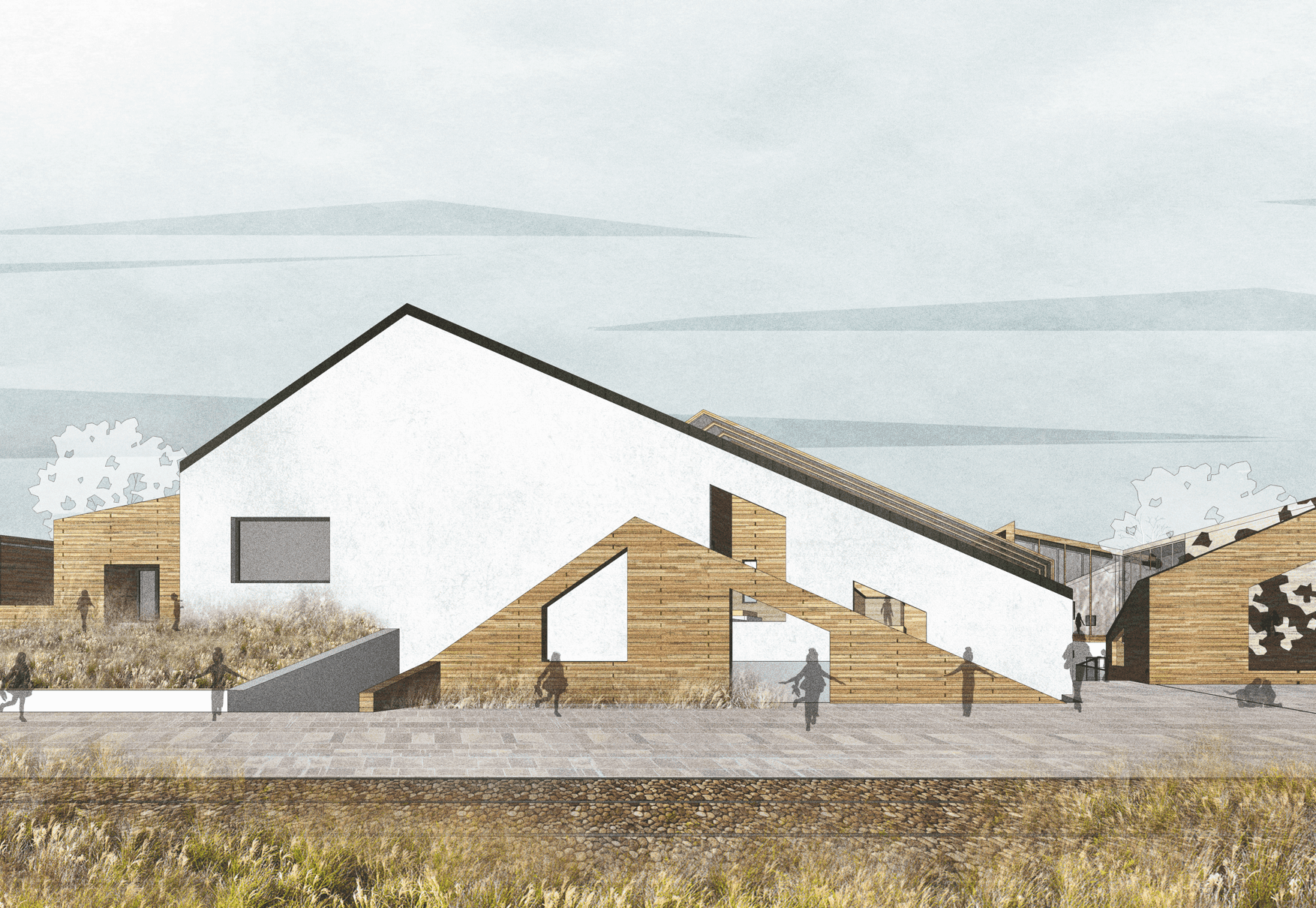
Challenges and Target User
Site Analysis
The site I chose for my thesis research is in downtown Blacksburg, Virginia (where Virginia Tech is located). It is currently a large, blank lawn, which I proposed to build into a child-adult daycare center for the joint purpose of care, social communication, and education.
The child-adult day care is a space that provides services like personal care, health monitoring, and social activity for aging adults, while also providing preschool programs for young children.
The existing downtown Main Street in Blacksburg is predominantly thought of as a commercial and residential area. I wanted to take this opportunity to bring more public space to Main Street. Considering the important relationship between the town of Blacksburg as a whole and its downtown area, the daycare center would function as a link between the two urban scales. When the daycare closed at night, a portion of the daycare's outdoor public space would be made open to the public.
Design Concept
While envisioning a space for both children and seniors, I chose to tailor my design to the constraints of the site. I found connections between my own life experiences and research and then conducted interviews to determine the needs of daycare users.
At this site, children are innocent and full of energy, whereas the elderly have both wisdom and a wealth of life experiences. The architecture aims to provide a quality physical environment for these two groups to meet, and through its design, provide more opportunities for them to learn from one another and to engage with each other during the times they spend in the facility. I approached and developed my design ideas through two main research strategies, detailed below.
First Strategy: Interview the Program Manager from Virginia Tech’s Current Daycare
At the beginning of the project, I interviewed the Virginia Tech Daycare Program Manager to determine daycare users’ various needs. From this interview and a site visit to the current Virginia Tech daycare, I recognized the importance of accessibility and safety for children (as well as seniors) in reaching this site.
In addition, I realized that spaces in the daycare would need to be scaled to fit the needs of children and seniors. For instance, designing lower outdoor furniture for children to sit on would be required, while seniors typically need higher seating. At the same time, I recognized the need to create various gathering spaces for different groups of people at the daycare.
Second Strategy: Study Classroom Typology
I designed a classroom based on my studies of classroom typology. This laid the groundwork for my use of child-appropriate scales throughout the design process.
Below are diagrams of two sections. The first shows a view of the main entrance area under the bridge. The second depicts the building and its surroundings.
Below are two renderings. The first is a view from the main entrance to the daycare from the east side. The second shows the courtyard between the student dorm and the daycare entrance.
